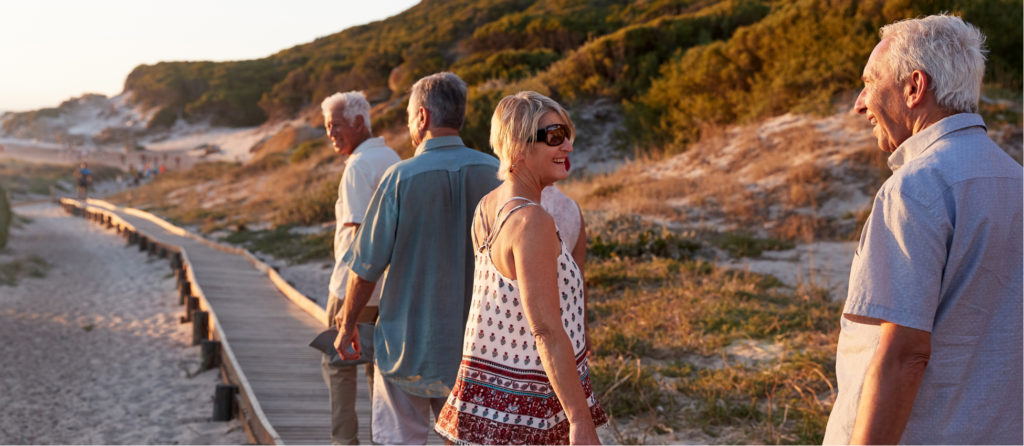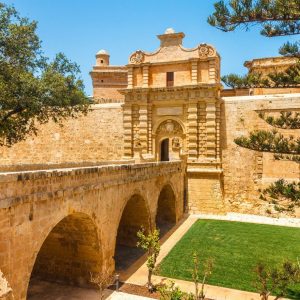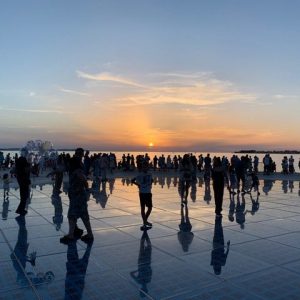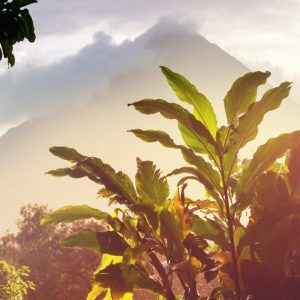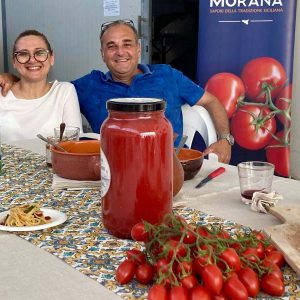Mountain ranges, the countryside, walking, and hearty local food and wine epitomises the Abruzzo region. One hundred kilometers from Rome, at the heart of Italy the bear is the symbol of the Abruzzo National Park, once a Royal hunting reserve where bears and wolves still roam. A delight for lovers of the outdoor life where, in autumn, with the sun still shining the leaves are a blaze of colour and where, in winter, there are numerous ski slopes.
Common to all villages is the main square with a fountain at its centre, accessed via narrow cobbled streets. During the summer, they compete to be the prettiest so houses are covered with cascading flowers.
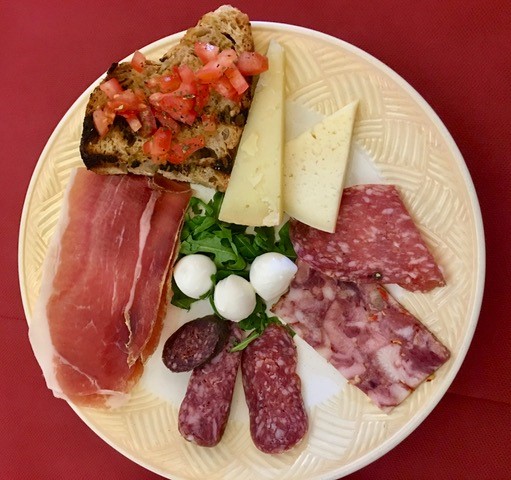 In the village of Pescasseroli, owners of food shops came out to entice visitors to taste the local food, pecorino cheese made from sheep’s milk; crudo, ultra-thin smoked slices of ham; and cornmeal cake made with either hazelnuts or almonds. In the restaurants the local red Montepulciano d’Abruzzo is served in carafes while the better quality wine is by the bottle. An animal rescue centre cares for wild, injured animals. that are cared for until they can be returned back into the wild. Sadly not all are considered safe to be released. Lauretta, the local Marsican brown bear found as a cub in 1994, has been kept there ever since.
In the village of Pescasseroli, owners of food shops came out to entice visitors to taste the local food, pecorino cheese made from sheep’s milk; crudo, ultra-thin smoked slices of ham; and cornmeal cake made with either hazelnuts or almonds. In the restaurants the local red Montepulciano d’Abruzzo is served in carafes while the better quality wine is by the bottle. An animal rescue centre cares for wild, injured animals. that are cared for until they can be returned back into the wild. Sadly not all are considered safe to be released. Lauretta, the local Marsican brown bear found as a cub in 1994, has been kept there ever since.
At Civitella Alfedena a museum is devoted to wolves with an enclosed large wild reserve bordering on the man-made Lake Barrea, which is home to a pack of wolves. Apparently a couple of wolves that subsequently mated were rescued and had cubs. It was felt they wouldn’t be able to protect themselves in the wild. We visited as night was falling, the best time to see the animals. Sure enough, although at a distance, I was able to see several of them from a road above the reserve.
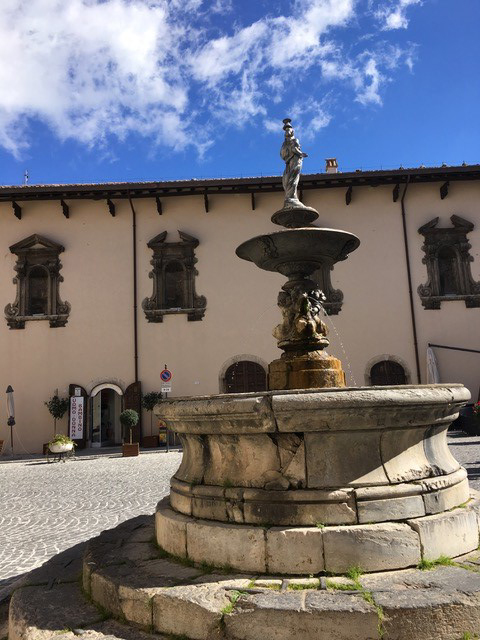 In Pescocostanzo we ate at Locanda Tre Frati in what used to be a 16th century Franciscan monastery. The village was rebuilt after a volcanic irruption in the 15th century, and the streets in the old part are paved with volcanic rock. I was able to climb up to where the original settlement would have been, not to see the ruins, but for the panoramic view of the valley below.
In Pescocostanzo we ate at Locanda Tre Frati in what used to be a 16th century Franciscan monastery. The village was rebuilt after a volcanic irruption in the 15th century, and the streets in the old part are paved with volcanic rock. I was able to climb up to where the original settlement would have been, not to see the ruins, but for the panoramic view of the valley below.
In the northern part of Abruzzo, the medieval town of L’Aquila was largely destroyed in the earthquake of 2009. However in the last couple of years the area has become a building site. The restoration project uses the latest techniques for buildings to resist tremors if there is a similar occurrence. Completion is hoped for by 2019. A short walk from the centre the exterior of the town’s most important church, the 13th century Basilica di Collemaggio, the Church of Celestino V, known as the Pope of the Poor. has remained intact. As well as restoring the buildings as much as possible to look as they did originally Rome’s MAXXI, the National Museum of 21st Century Art & Architecture is opening an off-shoot in one of the restored palaces.
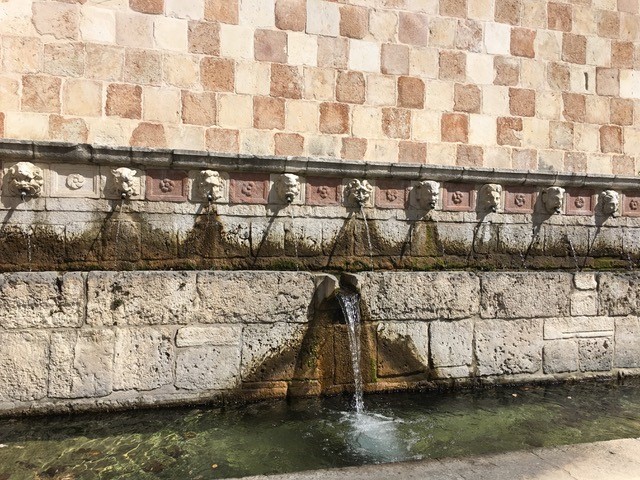 Near the train station six kilometers of the town’s original walls remain intact. Within its boundaries, is an enclosure known as the Fountain of the 99 Spouts, which dates back to 1275, and is where the locals came to wash their clothes. For me one of the most endearing moments of my visit was seeing a huge furry dog sitting by the door of my hotel. On further enquiry, I learned that she lives in the nearby park, where the local municipality has built several kennels for stray dogs. Within this park, a castle built by the Spanish in the 16th century as a fortress, houses the town’s museum.
Near the train station six kilometers of the town’s original walls remain intact. Within its boundaries, is an enclosure known as the Fountain of the 99 Spouts, which dates back to 1275, and is where the locals came to wash their clothes. For me one of the most endearing moments of my visit was seeing a huge furry dog sitting by the door of my hotel. On further enquiry, I learned that she lives in the nearby park, where the local municipality has built several kennels for stray dogs. Within this park, a castle built by the Spanish in the 16th century as a fortress, houses the town’s museum.
Worth noting in this part of Italy that breakfast rather than being leisurely is a quick meal, usually coffee with something sweet, such as cake. The main meal is at lunchtime when portions, cooked using local ingredients, are substantial. 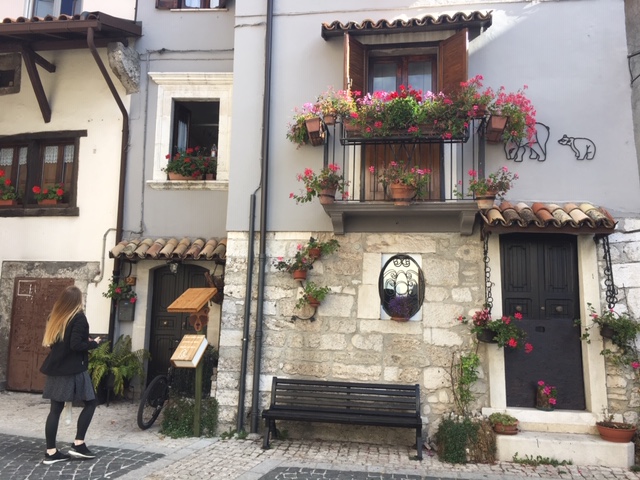 It is very normal to have a pasta dish, with freshly made pasta, in between the starter and main course. Saffron, which is grown locally in Navelli an area near L’Aquila is used frequently giving their pasta and risotto a yellow colour.
It is very normal to have a pasta dish, with freshly made pasta, in between the starter and main course. Saffron, which is grown locally in Navelli an area near L’Aquila is used frequently giving their pasta and risotto a yellow colour.
The roads are winding, and driving up and down a mountain will take longer than a straight road so its something worth remembering when calculating distances. For lovers of nature, the mountains are there to be enjoyed. What makes this region so special is that, in every village there is something special, different, or just part of history that is waiting to be discovered.
More information
Natasha flew to Rome. Access to the area is also possible via Naples and Pescara.
www.heathrowexpress.com – The non-stop train takes 15 minutes from Paddington Station to Heathrow Airport.
